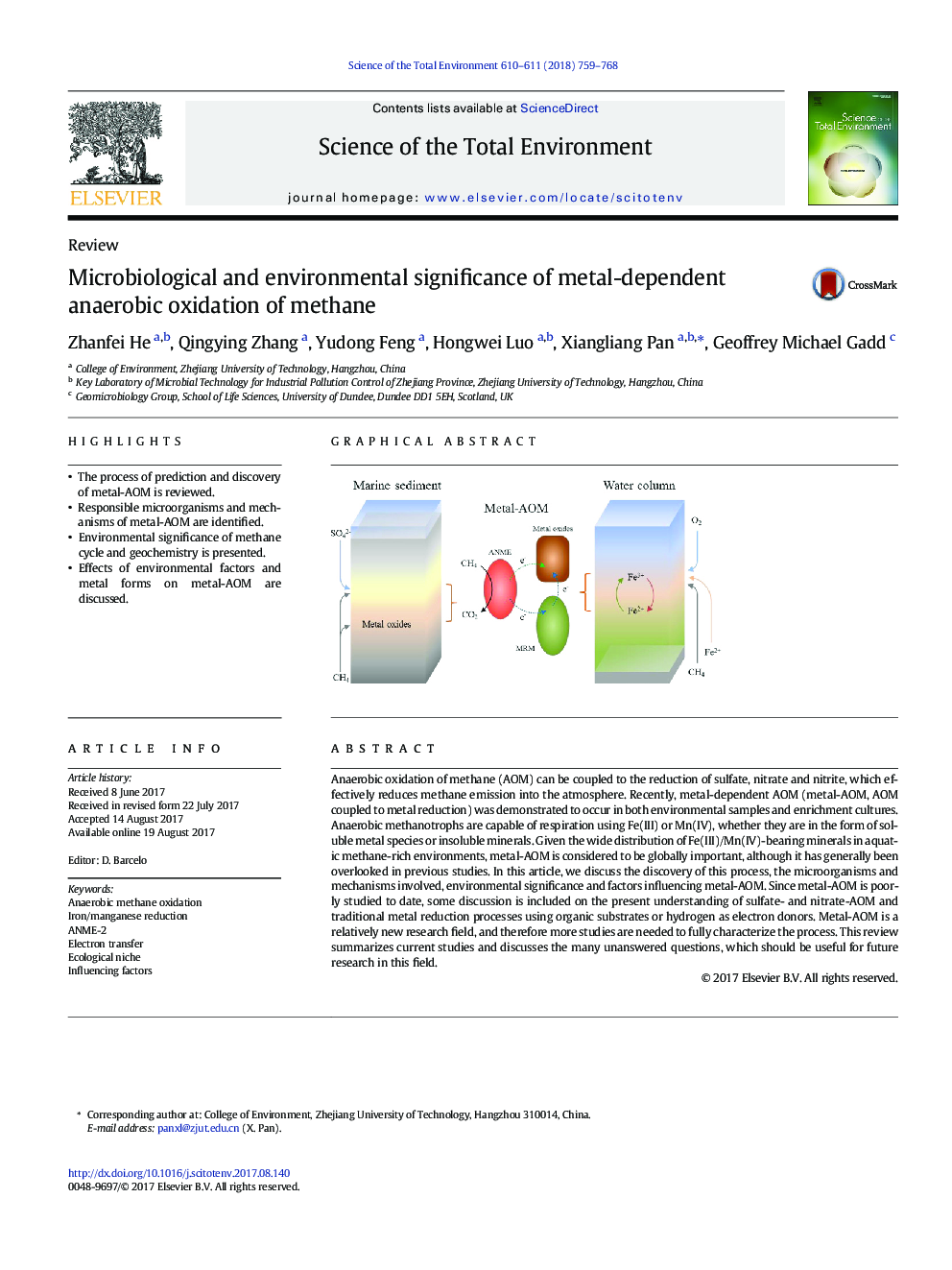| کد مقاله | کد نشریه | سال انتشار | مقاله انگلیسی | نسخه تمام متن |
|---|---|---|---|---|
| 5750242 | 1619692 | 2018 | 10 صفحه PDF | دانلود رایگان |
- The process of prediction and discovery of metal-AOM is reviewed.
- Responsible microorganisms and mechanisms of metal-AOM are identified.
- Environmental significance of methane cycle and geochemistry is presented.
- Effects of environmental factors and metal forms on metal-AOM are discussed.
Anaerobic oxidation of methane (AOM) can be coupled to the reduction of sulfate, nitrate and nitrite, which effectively reduces methane emission into the atmosphere. Recently, metal-dependent AOM (metal-AOM, AOM coupled to metal reduction) was demonstrated to occur in both environmental samples and enrichment cultures. Anaerobic methanotrophs are capable of respiration using Fe(III) or Mn(IV), whether they are in the form of soluble metal species or insoluble minerals. Given the wide distribution of Fe(III)/Mn(IV)-bearing minerals in aquatic methane-rich environments, metal-AOM is considered to be globally important, although it has generally been overlooked in previous studies. In this article, we discuss the discovery of this process, the microorganisms and mechanisms involved, environmental significance and factors influencing metal-AOM. Since metal-AOM is poorly studied to date, some discussion is included on the present understanding of sulfate- and nitrate-AOM and traditional metal reduction processes using organic substrates or hydrogen as electron donors. Metal-AOM is a relatively new research field, and therefore more studies are needed to fully characterize the process. This review summarizes current studies and discusses the many unanswered questions, which should be useful for future research in this field.
140
Journal: Science of The Total Environment - Volumes 610â611, 1 January 2018, Pages 759-768
